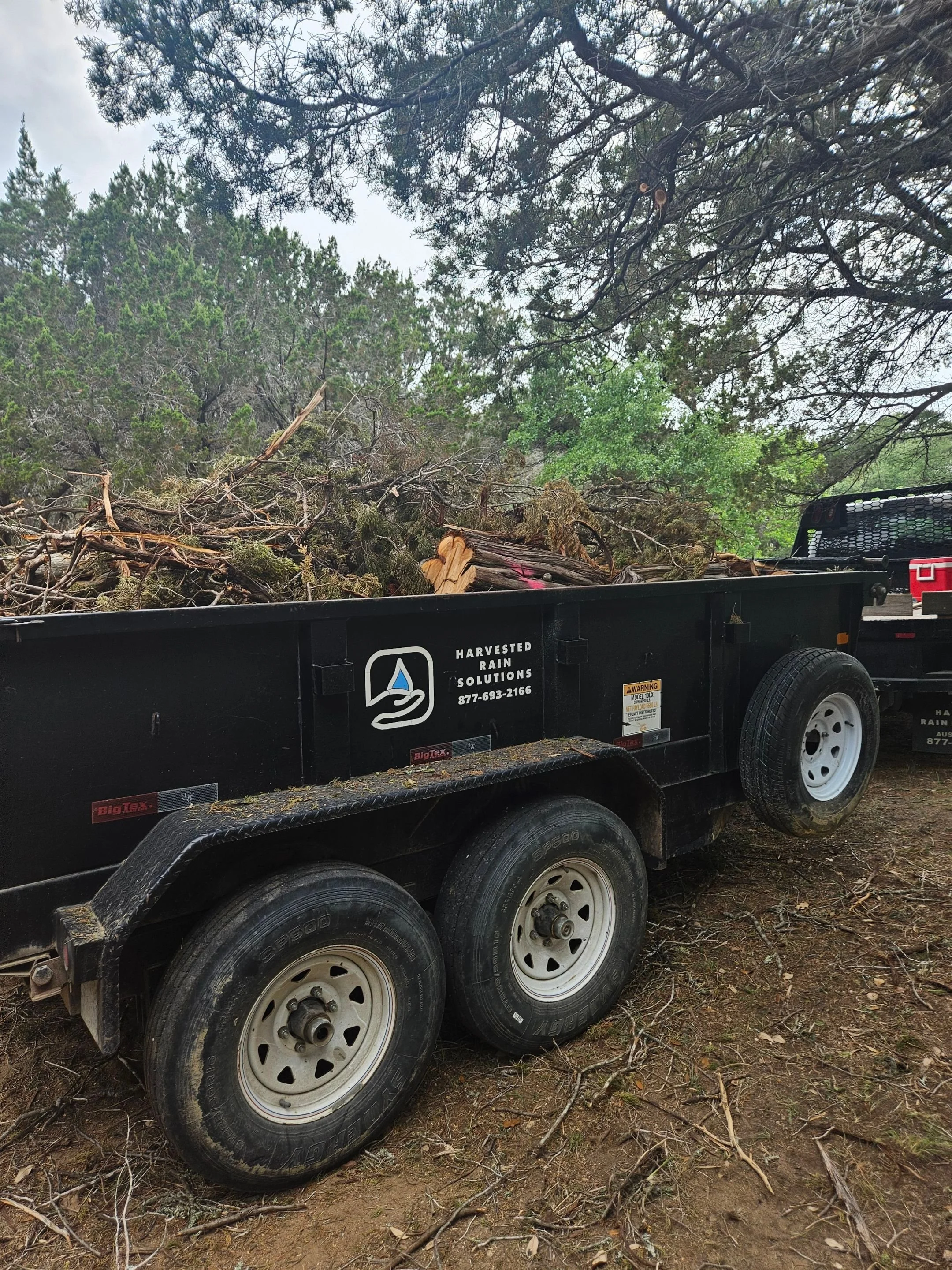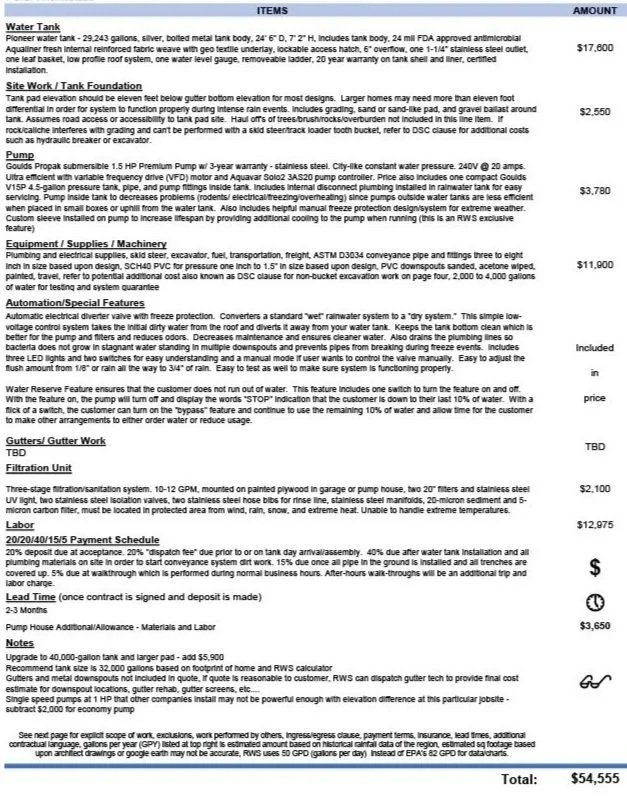Cqure Water “Rains” in Quality
If you are a Central Texas homeowner, or looking to build your dream home, opting for rainwater harvesting is the best choice you could make for your potable water source. Whether you’re over getting thirteen boil notices a year, tired of your well dying in the middle of your shower, or floored by the exorbitant prices for drilling a well, you can rest easy knowing that there is a safe, reliable solution. But now that you know there is an alternative, how do you choose the right company for you? Simply googling “rainwater collection Central Texas” will give you dozens of results, many installing similar systems, each one claiming to be the best. Truthfully speaking, there are many great rainwater companies out there, and we happen to think we’re one of them. But not every company is created equally, and every homeowner values something different. One homeowner may value the turnaround time, or continued maintenance, the other may be most focused on the bottom dollar. Over the next two posts, we’ll be comparing our bids on two properties with two from our competitors. In one scenario we won and the other we lost. In both situations, the homeowners got a functional and aesthetically pleasing system.
(*disclaimer: We have included our bids and our two competitors bids below with all identifying information removed)
Our first project is a single family home in Southwest Austin. This was a retrofit system; the couple has an existing well that is underperforming, and wanted to use rainwater as their primary potable source while still having the option to switch back to their well if needed. Our competitor’s bid came in at $54,555 while ours was $61,390. Upon first inspection, the price difference can seem alarming, but let’s break it down and see where the homeowner found value.
The tank: Our competitor quoted this couple a Pioneer XLR23 tank with a 29,000 gallon capacity in the standard zincalume finish. This tank would have likely met their needs, and the competitor did offer the option to go up a tank size. We discussed multiple tank options with the couple, and they ultimately decided on a Pioneer XLR30 tank in Pale Eucalypt with a 39,000 gallon capacity. Had the couple chosen our competitor, they would have still gotten a high quality tank installed by certified Pioneer install professionals. If they had requested the 29,000 gallon zincalume tank from us, the price would have been about $8,000 less.
The tank pad: All Pioneer water tanks are required to be placed on a level surface with a sand cushion and reinforced with a stone ballast, or placed on an engineered concrete ring. The sand pad is a more natural and economic option and allows grace for the tank to expand and contract in variable temperatures. The tank location and excavation was relatively straightforward, but did require the removal of six larger Ashe Juniper stumps. Our competitor’s site work is quoted about $1,000 less than ours, but our pad is also 4.5 feet bigger in diameter due to the increased tank size, which also requires more sand to be purchased and delivered. We also offered to haul off any brush that was created by our excavation, which our competitor would not do. This is factored into the price, but most likely if a client wants the brush gone, they are okay with the additional cost over the extra work of hiring another company to come pick it up.
The pump: In both quotes, the pumps came in at a similar price, within $170 of each other. Both companies opted for a submersible pump, and both pumps are highly rated. The Goulds propak pump quoted by our competitor is a great pump, and one we use as well. We opted for a DAB D3 submersible pump to eliminate the need for the additional mounted controller. Had the client gone with our competitor, they very likely would have had no issues and enjoyed the pump quality.
The filtration equipment: Any potable rainwater system is going to come with a three stage filtration system. This most often includes a 5-10 micron sediment filter, a carbon filter, and then a UV light chamber. However, our competitor’s price came in quite a bit less than ours. It can be hard to say exactly why this is, but one possibility is that the filtration system quoted by our competitor is a lower output system, only treating 10-12 gpm, whereas ours is a higher output at 25 gpm. This means that your system can keep up even on the days when the dishwasher is running, someone is in the shower, and everyone needs laundry done, without losing reliable water pressure.
The collection plumbing and components: The layout and scope of work for this system was similar for both ourselves and our competitor. There would be the same amount of downspouts and a large portion of the collection system would be located above ground, underneath the decking and crawlspace of the home. So why is our price so significantly higher than our competitors? At a $4,200 difference, the price can seem alarming but there are some notable factors to consider. One major difference is the quality of pipe used. This competitor uses ASTM D3034 pipe, a thin-wall drain pipe. ASTM pipe is fine, but the thin nature makes it highly susceptible to damage. Settling along the trenches can cause fittings to crack, and plumbing above ground leaves thin pipes likely to shatter in freezing weather. We only use SCH40 pipe, which holds up better, and is safer in any area that may have vehicles or mowers driven over it. We also included strapping the pipe for structural pipe in our quote, whereas our competitor offered it at an additional price. Rainwater systems rely on steady gravitational flow to work, and humps or bellies along the pipe can cause airlocks and prevent collection. By leaving the pipe on the ground, any amount of shifting can create these bellies. Another reason our competitor’s prices seem low, but may not be in the end, is the variable costs mentioned in the quote. Many competitors may offer one cost, but include clauses based on situations that may come up. The price may have started at $54,500, but then there’s extra for strapping, $200 an hour for a rock hammer, $1100 a day for a rock saw, even $500 if the tank location is far away, or $1000 if a site becomes inaccessible for even one day. While some of these prices exist to cover the company’s assets, it’s not a transparent policy, and you don’t know what you’re actually paying in the end. If your home is in Hays or Blanco county, where limestone prevails, these “possible” charges become probable, if not guaranteed. Why not go with a company with transparent prices that won’t change? We do the research first, we look at USGS soil studies and price our systems based on what we know it will take. And we own all of our own equipment, including an excavator and rock hammer, so you won’t lose money or time to equipment rentals.
The last major difference in our pricing is labor. Each line item for our competitor looks much smaller if you do a direct comparison. But they also break labor off as a separate line item, totaling almost $13,000, whereas we factor labor and installation into every component. There is no right or wrong way to quote labor, what’s important is considering this when trying to figure out why one tank may cost a couple thousand more than an identical tank from another company. If we were to divide our competitor’s labor cost into the individual system components, our prices would be less than theirs.
From our competitor:
❌ 10,000 gallon less in storage, standard Zincalume tank
❌ Thin wall pipe, laid along the ground
❌ UV system with half the output
❌ No option to haul off brush
❌ Extra costs for variables, no way to know the final price
❌ Only one year warranty offered
To sum it up, here is what the client received
From Cqure Water:
✅ 39,000 gallon storage tank in a gorgeous green
✅ Stronger, more stable plumbing
✅ UV system with a higher output
✅ Haul off of all brush created by installation
✅ Transparent pricing, and no variable costs
✅A three year warranty on all components and plumbing
In our next post, we’ll discuss another situation where we were unfortunately unable to beat out competitor’s price and lost the bid. We can’t win them all, but we do think it’s important to see multiple perspectives to create the most informed decision.













